Automatically create
Multiple Choice Polls
from your
Google Meet
chat
for
Science Lecture
Used by 4,000+ universities, businesses, and streamers
What does StreamAlive's
Multiple Choice Polls
do?
Welcome to a new era of live audience engagement with StreamAlive's Multiple Choice Polls, designed specifically to elevate your Science lectures on Google Meet. StreamAlive seamlessly transforms the comments from your Google Meet chat into visually captivating Multiple Choice Polls, allowing your audience's responses to be displayed in real-time without the hassle of directing them to a separate site or app. Whether you're gauging understanding of complex topics such as the phases of mitosis, testing knowledge on the laws of thermodynamics, or sparking curiosity with questions about the mysteries of quantum physics, these polls are crafted to make your sessions more interactive and engaging. Experience the power of live interaction as your students engage directly through the chat, turning each session into a dynamic learning experience.
With StreamAlive's Multiple Choice Polls feature, integrating engaging questions into your Google Meet Science Lectures has never been easier. Forget about the hassle of codes, embeds, or complicated URLs—everything is seamlessly integrated into your existing platform. You can effortlessly create and launch Multiple Choice Polls directly from the live chat during your session, encouraging active participation and instant feedback from your students. This streamlined process allows educators to enhance live audience engagement, making your science lectures more dynamic and interactive without disrupting the flow of your presentation.

* StreamAlive supports hybrid and offline audiences too via a mobile-loving, browser-based, no-app-to-install chat experience. Of course, there’s no way around a URL that they have to click on to access it.
StreamAlive can create
Multiple Choice Polls
for all event types


How you can use
Multiple Choice Polls
Once your audience gets a taste for
Multiple Choice Polls
created from
the live chat, they’ll want to see them used more often.
Real-time Knowledge Check
Utilize Multiple Choice Polls during your Science lectures to conduct instant knowledge checks. For instance, after covering a topic on cellular biology, you can quickly assess your students' understanding of mitosis by asking them to select the correct phase order. This allows you to identify areas that may need more clarification while keeping students engaged.
Engaging Quiz Competitions
Turn your traditional lesson into an exciting quiz competition using Multiple Choice Polls. Pose questions related to recently covered topics, such as chemical reactions or Newton's laws, and let students compete to answer correctly. This friendly competition can boost engagement and reinforce learning, making your lecture sessions more interactive.
Feedback and Reflection
Use Multiple Choice Polls to gather immediate feedback on your teaching methods or the clarity of the material presented. After a lesson on ecosystems, pose a poll asking students about which part they found most challenging. This will give you insights into student needs, allowing you to tailor future sessions for improved live audience participation.
Multiple Choice Polls
can be created by
anyone running a
Google Meet
session
.svg)
.svg)
.svg)
.svg)
Powered by the chat.
StreamAlive seamlessly integrates with Google Meet's chat functionality, transforming participants' chat comments into interactive Multiple Choice Polls, providing instantaneous live audience engagement without leaving the platform.
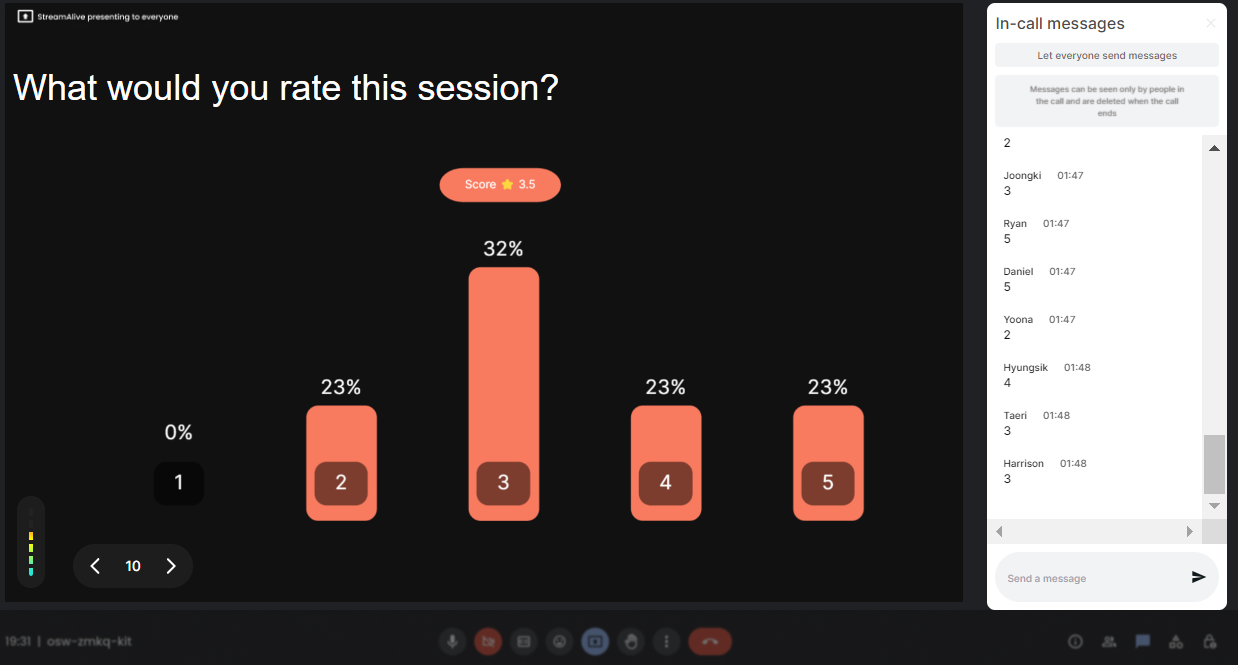
Run regular polls, multiple choice polls, or open ended polls.
With StreamAlive, educators can diversify their sessions by utilizing various polling formats including regular polls, engaging multiple choice polls, and thought-provoking open-ended questions, making each lecture more dynamic and interactive.
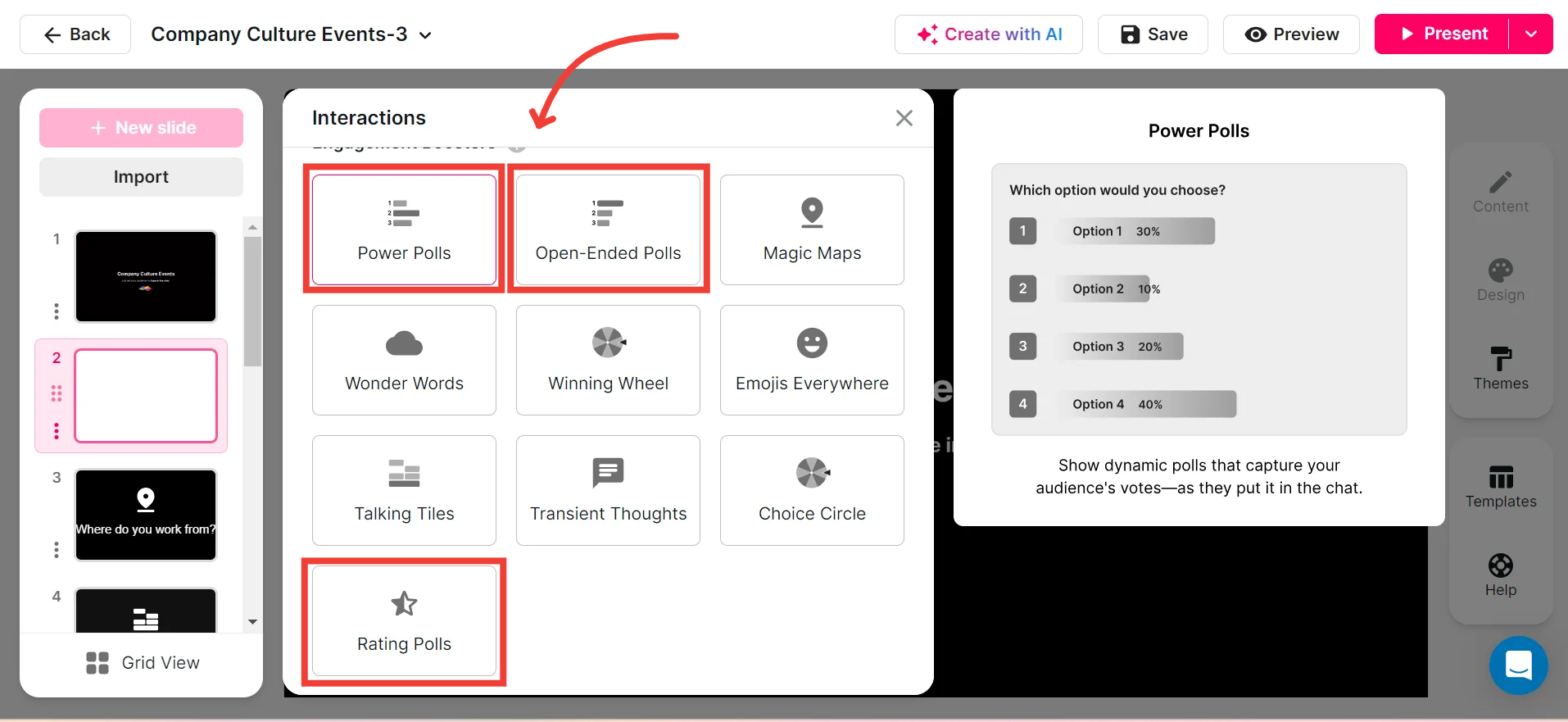
Create unlimited Multiple Choice Polls for your live sessions.
Unlimited polling capability means educators can continuously assess understanding and adapt their teaching methods on-the-fly, ensuring an engaging and effective learning experience during every science lecture.
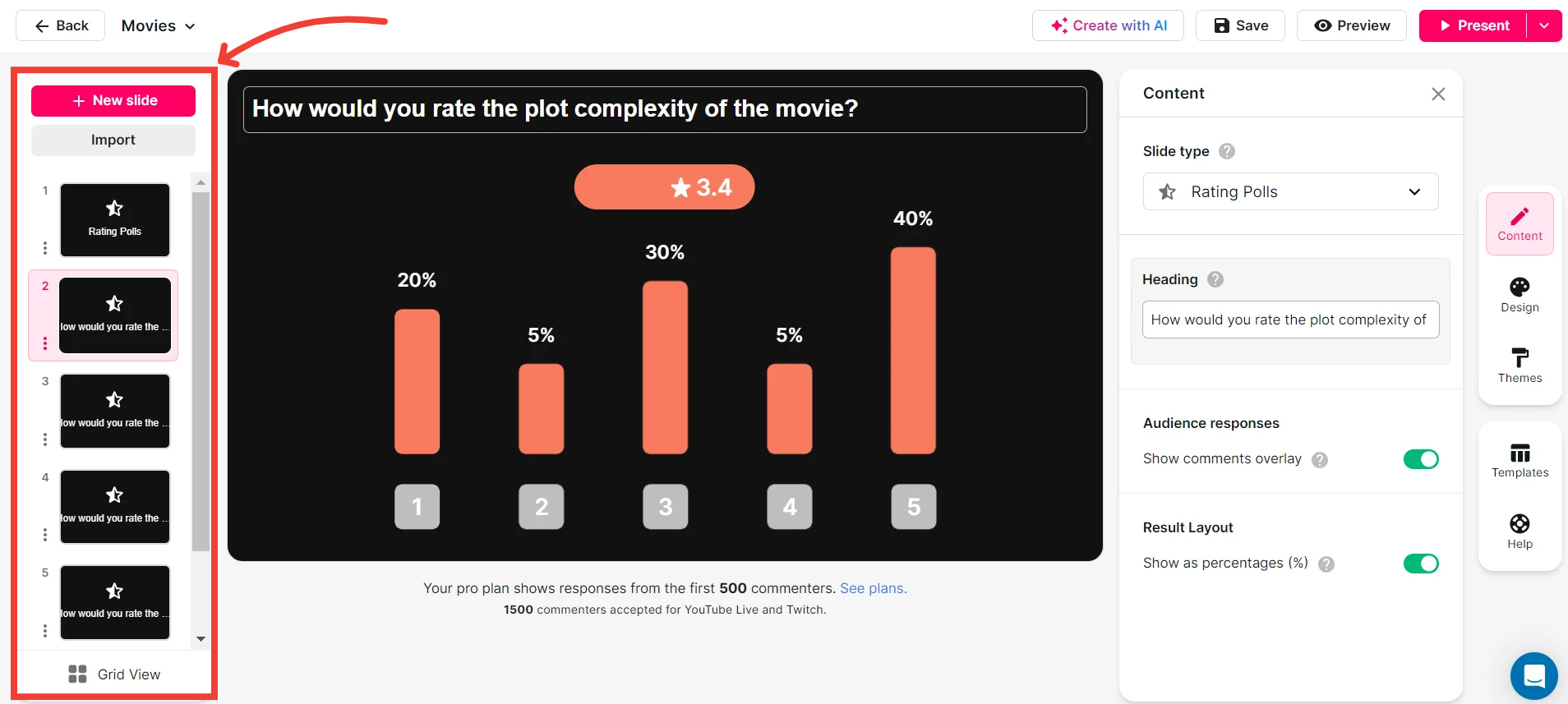
Use StreamAlive's browser-based chat to make voting anonymous.
StreamAlive's browser-based chat offers anonymity in voting, encouraging more honest and uninhibited responses from students, thus enhancing the authenticity of live audience interaction.
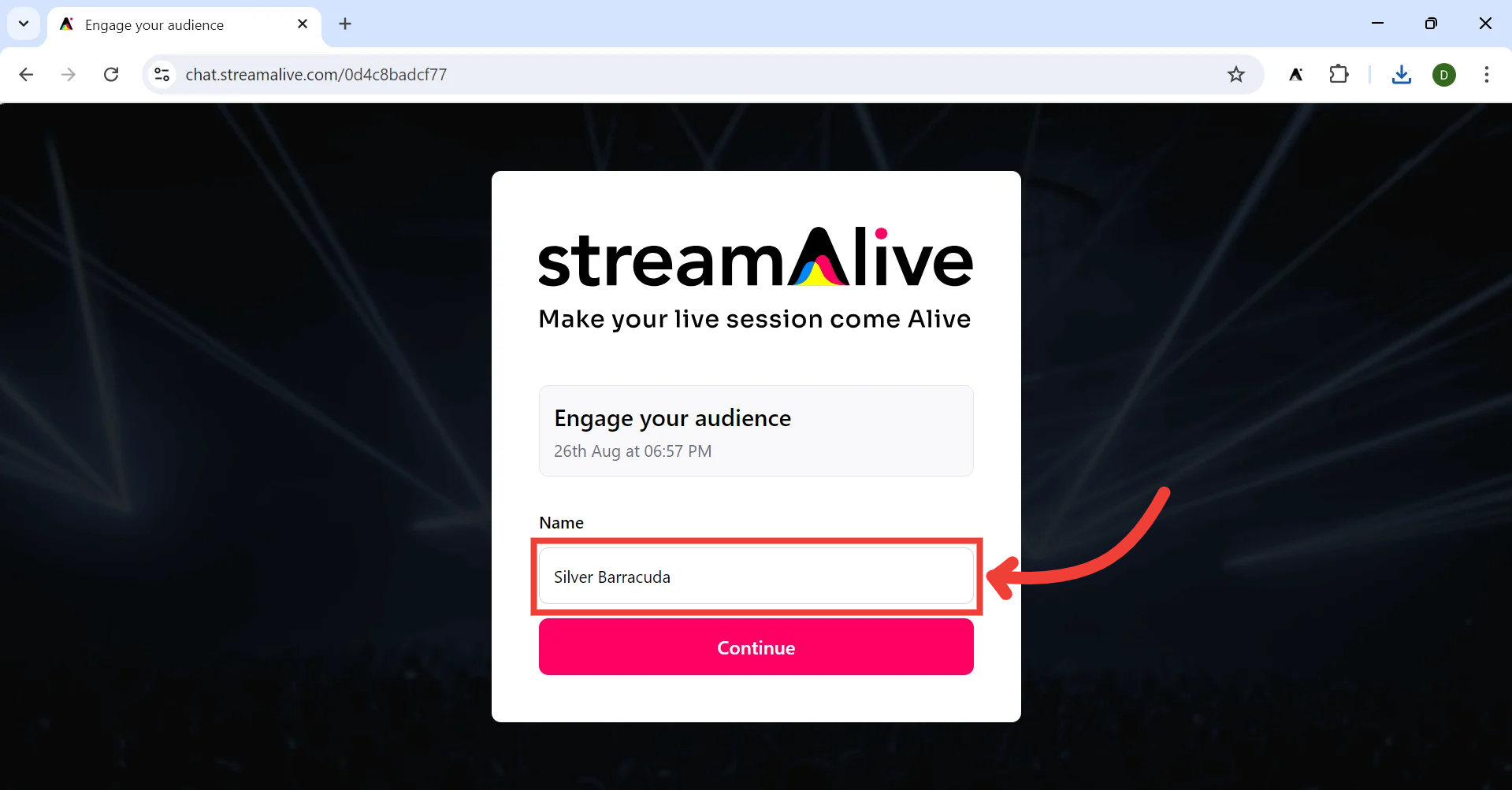
Customize how your Multiple Choice Polls look.
Personalize your polling interface to align with your lecture theme or educational style, thereby creating a more cohesive and visually engaging experience for your students.
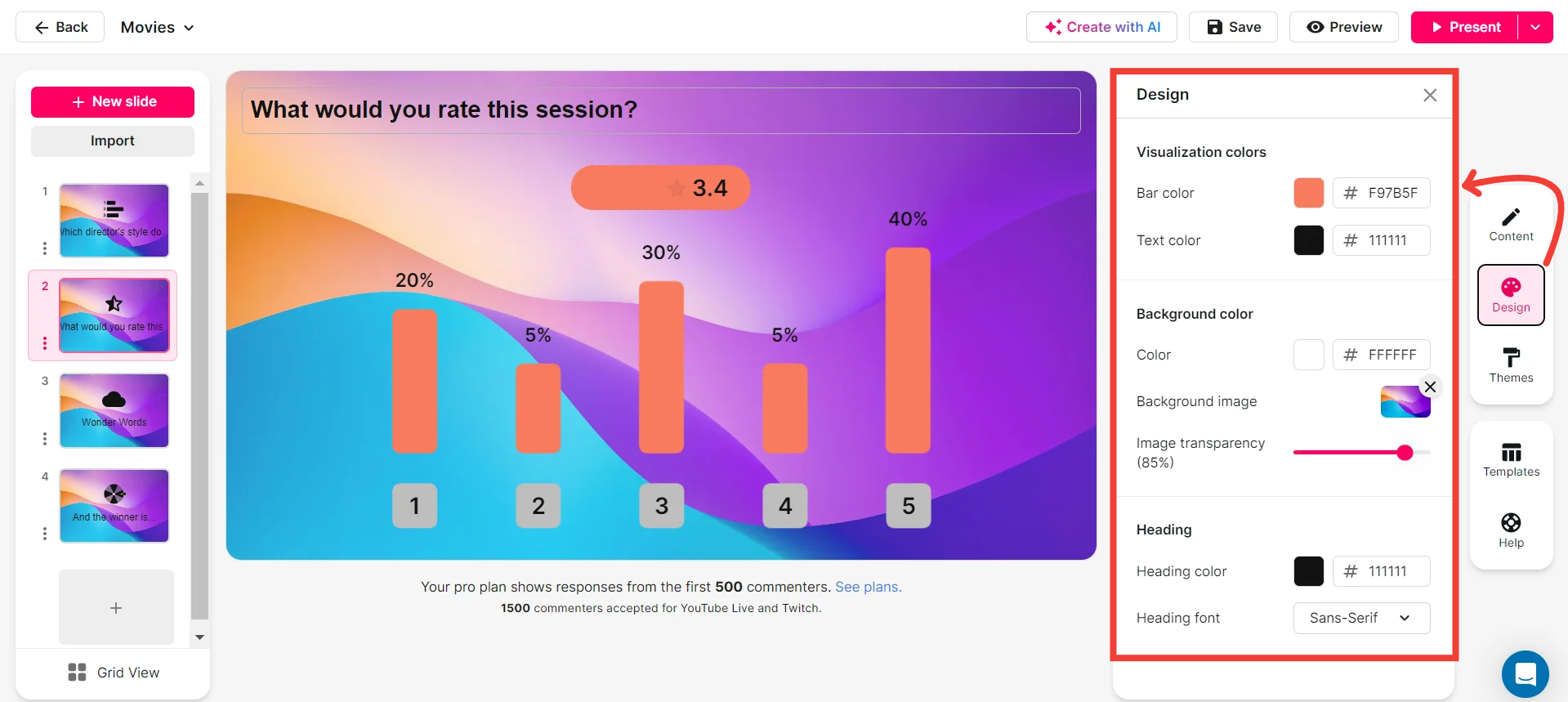
Save Multiple Choice Polls results and see who voted.
Record and review poll results with ease, providing valuable insights into student participation and understanding, while maintaining transparency on who has contributed to the live discussion.

Chat-powered
Multiple Choice Polls
isn't the only thing
you can do with StreamAlive
Bring your audience’s locations to life on a real-time map — as they put it in the chat.
Create unlimited live polls where the audience can vote directly from the chat box.
Spin a wheel of names or words and let the spinner wheel pick a winner.
Add a bit of Vegas to your live sessions and award prizes to active users in the chat.
StreamAlive automatically saves any link shared in the chat to be shared afterwards.
Call-out your audience's chats in cool thought bubbles for everyone to see in.
Unleash a storm of emojis to find out how or what your audience is thinking.
Your audience's thoughts and opinions visualized in a cascading sea of colorful tiles.
Visualize every word (profanity excluded) of your audience's chat comments.
StreamAlive automatically sniffs out audience questions and collates them for the host.
Bring your audience’s locations to life on a real-time map — as they put it in the chat.
Bring your audience’s locations to life on a real-time map — as they put it in the chat.
Bring your audience’s locations to life on a real-time map — as they put it in the chat.
Bring your audience’s locations to life on a real-time map — as they put it in the chat.
Bring your audience’s locations to life on a real-time map — as they put it in the chat.
Bring your audience’s locations to life on a real-time map — as they put it in the chat.
Bring your audience’s locations to life on a real-time map — as they put it in the chat.
Bring your audience’s locations to life on a real-time map — as they put it in the chat.
Bring your audience’s locations to life on a real-time map — as they put it in the chat.
Bring your audience’s locations to life on a real-time map — as they put it in the chat.
Bring your audience’s locations to life on a real-time map — as they put it in the chat.
Bring your audience’s locations to life on a real-time map — as they put it in the chat.
Bring your audience’s locations to life on a real-time map — as they put it in the chat.
Bring your audience’s locations to life on a real-time map — as they put it in the chat.
Bring your audience’s locations to life on a real-time map — as they put it in the chat.
Bring your audience’s locations to life on a real-time map — as they put it in the chat.
Bring your audience’s locations to life on a real-time map — as they put it in the chat.
Bring your audience’s locations to life on a real-time map — as they put it in the chat.
Bring your audience’s locations to life on a real-time map — as they put it in the chat.
Bring your audience’s locations to life on a real-time map — as they put it in the chat.
Bring your audience’s locations to life on a real-time map — as they put it in the chat.
Bring your audience’s locations to life on a real-time map — as they put it in the chat.
Bring your audience’s locations to life on a real-time map — as they put it in the chat.
Bring your audience’s locations to life on a real-time map — as they put it in the chat.
Bring your audience’s locations to life on a real-time map — as they put it in the chat.
Bring your audience’s locations to life on a real-time map — as they put it in the chat.
Bring your audience’s locations to life on a real-time map — as they put it in the chat.
Bring your audience’s locations to life on a real-time map — as they put it in the chat.
Bring your audience’s locations to life on a real-time map — as they put it in the chat.
Bring your audience’s locations to life on a real-time map — as they put it in the chat.
Bring your audience’s locations to life on a real-time map — as they put it in the chat.
Bring your audience’s locations to life on a real-time map — as they put it in the chat.
Bring your audience’s locations to life on a real-time map — as they put it in the chat.
Bring your audience’s locations to life on a real-time map — as they put it in the chat.
Bring your audience’s locations to life on a real-time map — as they put it in the chat.
Bring your audience’s locations to life on a real-time map — as they put it in the chat.
























.png)







.svg)
.svg)
.svg)
.svg)
.svg)